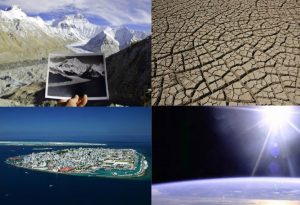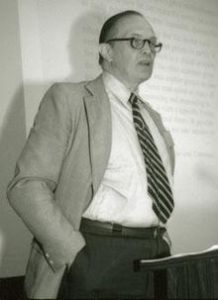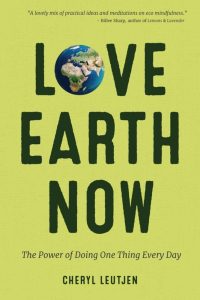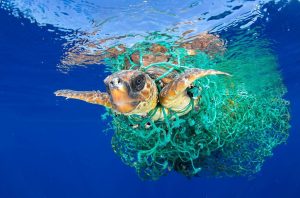1
“Climate change and global warming will bring dire consequences for agriculture, forestry, fisheries, ecosystems, coastal zones, infrastructure, water supplies and human health” (DeNicola & Subramaniam, 2013)

Extreme weather events, temperature, flooding, disease, and the quality of air, food and water are expected to increase in the near future due to climate change or direct effects from climate change (Singh & Purohit, 2014). The climate crisis has only worsened as time progresses, but unfortunately, most of us–the Earth’s citizens–are not behaving in ways that reverse the current path of climate change. While we might initially be tempted to think that most people aren’t educated about global warming, that’s just not true: the majority of Americans believe that global warming is happening, and about 58% of them know that climate change is mainly due to human activity (Leiserowitz et al., 2021).
The Earth’s deteriorating state is broadcasted on television and showcased on social media, but little seems to change, either on the individual and institutional levels, like governments and corporations (Pelletier et al., 1998). Try Googling “climate change” or “global warming” and you’ll see that even a simple web search provides you with enough information to form an educated opinion on the climate crisis. The problem still remains, though… increased environmental knowledge does not always directly lead to an increase of pro-environmental behavior (PEB). That’s what this book tackles. By looking through a psychological lens and specifically focusing on the sub-field of cognitive psychology–which includes important mental processes like goal formation and memory–this book uses the concept of “wise psychological interventions” to help you increase PEBs in your own life, through a science-backed workbook program.

Though modern, the concept of “wise psychological interventions” is rooted in George Miller’s 1969 call for wider availability of psychological knowledge. Miller, often called the father of cognitive psychology, believed that psychologists should be focused far more on giving their knowledge away to the general public, instead of using information just in academic and lab settings. In a 1969 presentation at the annual American Psychological Association convention, Miller stressed the importance of having psychologists who are willing and able to apply what they know to the public, so that psychology is used to help as many people as possible. He thought that psychology’s true revolutionary era would happen when psychologists became less engrossed in their own research and actually used their knowledge to help others. While Miller wrote the article over 50 years ago, the same sentiment rings true today. Because psychologists are often in isolated professional and social bubbles, and likely practice their discipline in either academic or clinical settings, not enough psychological science is being “given away” in helpful and effective ways. This book and project is based on similar concerns, that psychological techniques to increase pro-environmental behaviors are not being distributed through the general public like they should be. Because the issue is so pressing—a global emergency—this is of the utmost concern.

Though much of the knowledge generated in psychological laboratories remains locked away in journals, self-help books are often used as alternatives to psychological knowledge. Environmental literature is not exempt from this, and environmental self-help books are not uncommon. For example, a quick Google search of “self-help environmental books” brings up a few recent titles: “” by Cheryl Leutjen (2018), “The Future We Choose: Surviving the Climate Crisis” by Christiana Figueres (2020), and “How to Give Up Plastic: A Guide to Changing the World, One Plastic Bottle at a Time,” by Will McCallum (2018). These authors range from geologists to Greenpeace leaders, but none of them have experience in psychology and behavioral change. If these types of self-help books were fully helpful and effective, distribution of wise interventions would not be necessary.
Because of this trend–self-help books written by people without scientific knowledge on behavioral change–psychologists tend to be very critical of the self-help genre as a whole. According to Craig Schamel, the main issue with self-help books is that they focus on the self as an individual and fail to address the self in a social context (2020). Schamel gives an example of a conversation he had with a thirteen-year-old girl as a way to demonstrate the difference between self-help books and social science:
“She had looked up from her phone to add her voice to a family discussion in which I argued that knowledge was both different from information and also more valuable. She didn’t agree…I listened as she insisted that information and knowledge were the same thing. But they most surely are not. An analogy is the difference between ‘self-help’ literature and rigorous social science. The former, like information, exists as unmediated data; it involves the digestion of large amounts of examined facts as experienced by individuals. The latter, like knowledge itself, begins with aggregated data and techniques of thinking developed by many persons over time.”
While this quote is fairly long, it perfectly illustrates the differences between self-help and actual science. Self-help is sometimes effective, but it is not based on research. This is one reason why self-help too often neglects to consider individuals in a social context. Yet again, climate change is such a pressing issue that relying on untested, nonscientific self-help books to change individual behaviors is simply impossible and irresponsible. We must be very concerned about the lack of easily-accessible, empirically-based recommendations to the general public on increasing individual PEB, and look for solutions to the problem–like the workbook program included with this book.
The concern about giving away psychology continues today, and authors Walton and Wilson have created guidelines to implement wise psychological interventions in everyday life (2018). According to Walton and Wilson, wise interventions focus on the social and environmental context around individuals, including how they interact with others. There are two parts of wise interventions that make them “wise:” (1.) Being based on research, and (2.) Paying attention to the socio-cultural contexts in which they are meant for. By using wise interventions, we can change the individual’s interpretation of their surroundings, which the authors refer to as altering meanings. To alter meanings, wise interventions need to be based on serious concern for ethical considerations by the testing and retesting of the intervention. There are three main motivations behind making meanings: the individual’s “need to understand,” “need for self-integrity,” and “need to belong” (623-624). Walton and Wilson name four main strategies of changing meaning making: “direct labeling,” “increasing commitment through action,” “prompting new meanings,” and “active reflection exercises” (624-625). By analyzing current cognitive psychological research on changing pro-environmental behaviors, this book and accompanying workbook help create one path of accessible, PEB-increasing media to the general public.

So, in light of all this talk about “wise interventions” and meaning-making, what does the science say about increasing PEB? According to Boomsma et al. (2016), the motivational effects of environmental images (photos or videos of anything relating to the environment) are entirely related to goal-formation. Images that focus on future events, like the effects of climate change on a certain place, make the information more valuable and increase the likelihood of future pro-environmental goals and behavior. The authors suggest that environmental images can be internalized in two different ways, either by increasing existing PEBs, or creating goals for entirely new ones. Based on these premises, the authors conducted three separate studies in which university students were exposed to either a multimedia slideshow or a film directed at the environment: marine plastic pollution, heat loss in the home, and future climate scenarios, respectively. All three studies found that environmental imagery with specific messages were internalized and formed into mental images of the environment, and that vividness of original media is important in relation to vividness of the internalized image. Most importantly, “[c]onsistent and strong associations were found between mental images and the formation of pro-environmental goals and self-reported behavior change”. This is the big-ticket item in the research! It turns out that simply looking at photos of the environment lead to direct increase in PEB, and watching films about the environment is helpful as well.
These findings are incredibly important, because—even though this is only one article—it sets forth three separate studies that came to similar conclusions about environmental imagery, motivation, and behavior: multimedia environmental imagery is strongly linked to internalized mental imagery, behavior change, and goal-formation for difficult PEB. This is a great example of some of the research used for this book and workbook, because it provides direct conclusions that can be applied to real-life scenarios. For example, in the associated workbook, certain days’ exercises include meditative image reflection with in-book images and linked environmental videos, specifically chosen to reflect damage to the environment (like ocean pollution and how it negatively affects marine wildlife, for example).
This is just one example of how wise interventions can be derived from cognitive psychological literature aimed at discovering motivations behind PEB. While at first it may seem fairly difficult to translate academic research directly into accessible interventions, it is far easier to do when adopting the mental framework shared by Miller (1969), Walton and Wilson (2018), and Schamel (2020).

Chapter References
Boomsma, C., Pahl, S., & Andrade, J. (2016). Imagining change: An integrative approach toward explaining the motivational role of mental imagery in pro-environmental behavior. Frontiers in Psychology, 7, 1-14.
DeNicola, E., & Subramaniam, P.R. (2014). Environmental attitudes and political partisanship. Public Health 128, 404-409.
Figueres, C. (2020). The future we choose: Surviving the climate crisis. Knopf.
Leiserowitz, A., Maibach, E., Rosenthal, S., Kotcher, Carman, J., Wang, X., Goldberg, M., Lacroix, K., & Marlon, J. (2021). Climate change in the American mind: Data, tools, and trends. Environment: Science and Policy for Sustainable Development, 61(3), 4-18.
Leutjen, C. (2018). Love earth now: The power of doing one thing every day (environment, green living, for fans of zero waste home or power of now). Mango.
McCallum W. (2018). How to give up plastic: A conscious guide to changing the world, one plastic bottle at a time. Penguin.
Miller, G. (1969). Psychology as a means of promoting human welfare. American Psychologist, 24(12), 1063-1075.
Pelletier, L.G., Tuson, K.M., Green-Demers, I., Noels, K., & Beaton, A.M. (1998). Why are you doing things for the environment? The motivation toward the environment scale (MTES). Journal of Applied Social Psychology, 28(5), 437-468.
Russell, A. (2019). Can bullet journaling save you? The New Yorker, 1-6.
Schamel, C. (2020). The self of self-help books is adrift from social and economic facts. Psyche.
Singh, A., & Purohit, B.M. (2014). Public health impacts of global warming and climate change. A Journal of Social Justice, 26, 112-120.
Walton, G.M., & Wilson, T.D. (2018). Wise interventions: Psychological remedies for social and personal problems. Psychological Review, 125(5), 617-655.
